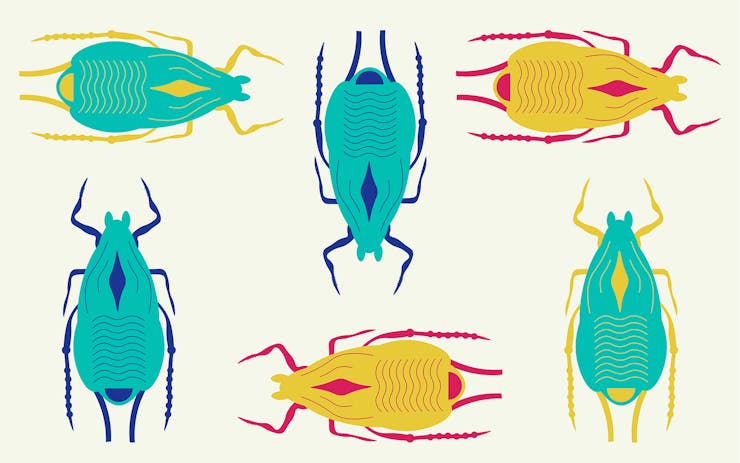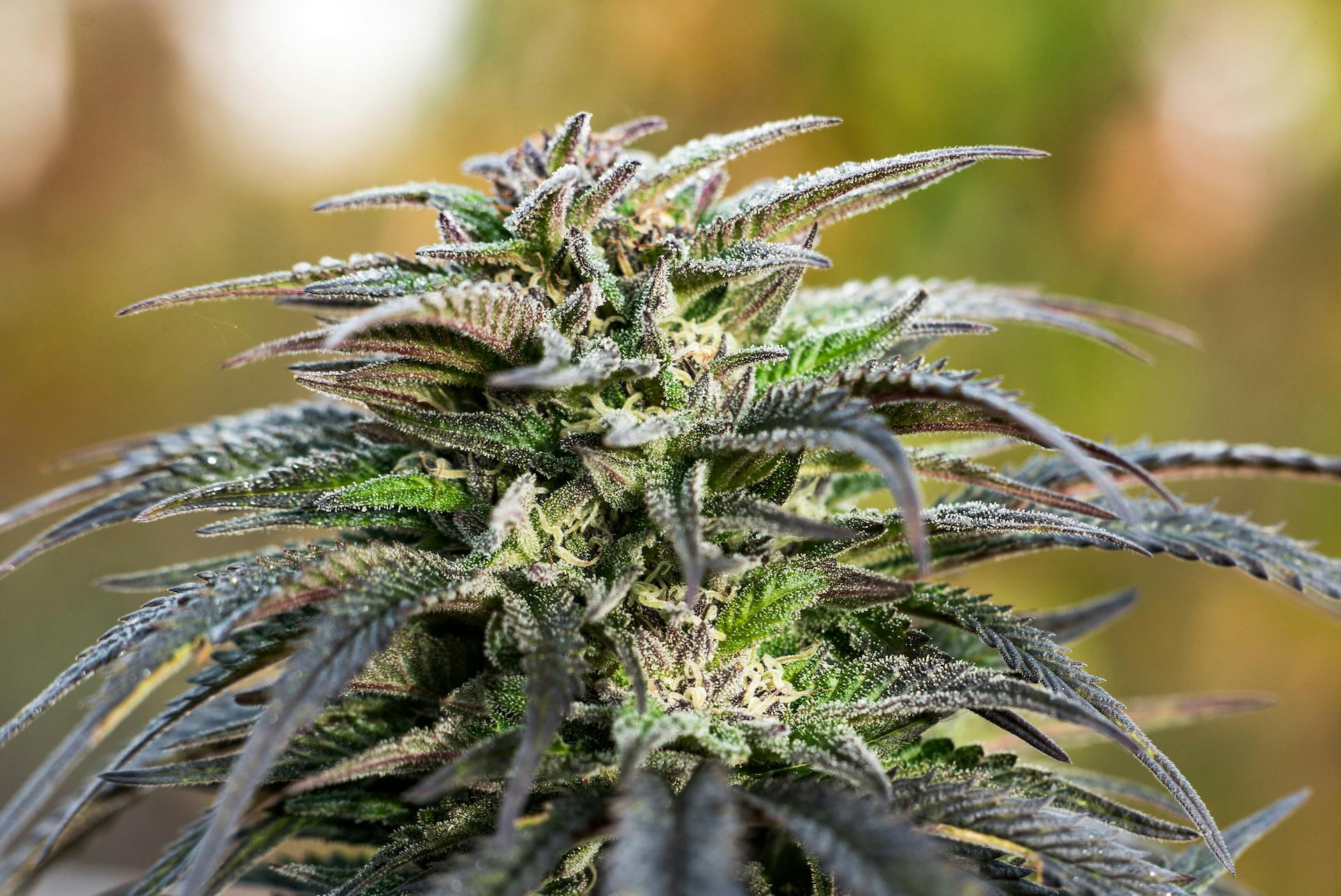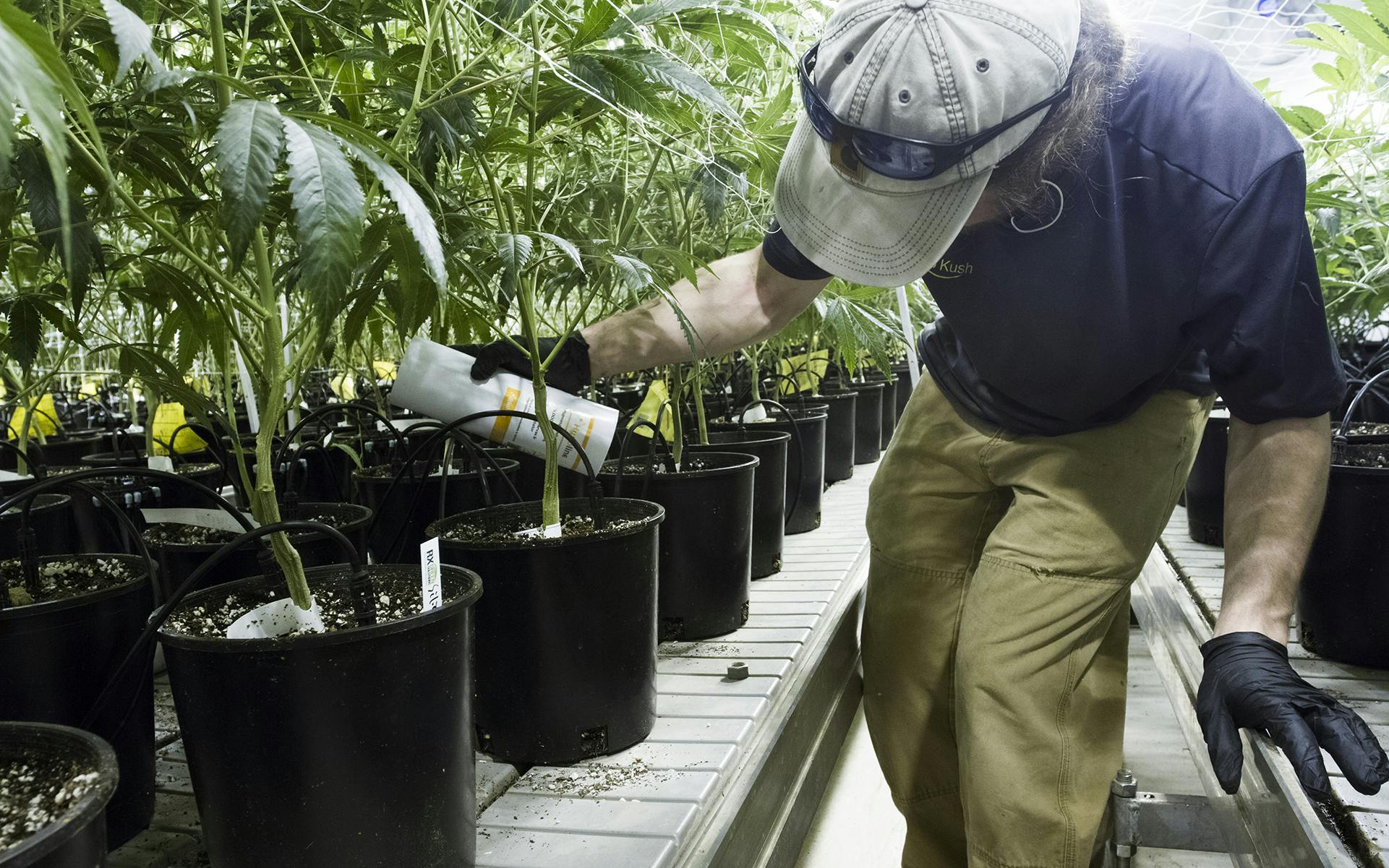At the time, the bugs crawling on Steve Bailey’s new cannabis plants didn’t seem particularly special. They weren’t even all that annoying.
It was early 2016, during the first few months of Oregon’s legal recreational marijuana market, and a Portland company was running a “grow the best clone” contest. Entrants each received cuttings of the same strain from the same source to see who could grow it best.
“Within a matter of months, you saw everybody having it.”
And the clones received by Bailey and his partners at Bull Run, a craft “farm-to-jar” cannabis brand with cultivation operations in Boring, Oregon, had bugs.
“We threw them out and that was that,” Bailey recalled. Or it was, for a while. Before long, friends and colleagues—many of whom had participated in the same clone contest—noticed similar bugs crawling on some of their crops. “Literally, within a matter of months, you saw everybody having it,” he said.
Like that, Oregon’s cannabis aphid outbreak had begun.
A Bug’s Life
As anyone who grows marijuana (or has tried) knows, unwelcome visits from insects are an occupational hazard. Bailey, who grew up on a traditional farm in the Willamette Valley, identified them as a “normal lettuce aphid,” he said.
He wasn’t alone. Other cannabis farmers in the area initially mistook the unidentified bug as a green peach aphid, hop aphid, or other common pest, said Joshua Vlach, an entyomologist at the Oregon Department of Agriculture.
The real culprit, it turns out, was Phorodon cannabis—literally the “cannabis aphid”—a pale yellow creature first identified and catalogued by an Italian researcher in the 1860s. For whatever biological reason, the bug evolved to feed on only plants of the genus Cannabis sativa.
Bailey believes the clone contest helped the bugs proliferate through Oregon. As for how the insect made it to the clone contest, somebody—nobody knows who—probably did what they weren’t supposed to and brought clones or cuttings across state lines.
“Colorado saw it before we did, so I would say that I suspect it came from clones from another region,” Vlach said via email. “Having said that, it is possible it was here in low levels or misidentified from the start.”
Even after they were identified, the aphids continued to spread across the state. By the end of 2017, they’d become so pervasive that the Oregon Department of Agriculture issued a statewide pest warning advisory.
High Stakes

(Elysse Feigenblatt/Leafly)
Cannabis is a plant whose hardiness as a “weed” is often overestimated. Like any crop, cannabis plants are susceptible to a host of biological threats. A few years before Bailey confronted the insects crawling on his clones, growers in Oregon and Northern California grappled with a particularly virulent outbreak of hemp russet mites, bugs that routinely plague both indoor and outdoor cannabis crops.
“I can find it in every county in Colorado where I have looked, and I know of it being found in Oregon, Minnesota, Virginia, and Ontario.”
So far, cannabis has yet to see a mortal peril on par with those that have periodically hammered other agricultural commodities, such as wheat, tulips, and wine. In the late 1800s, for example, the French wine industry was devastated by an outbreak of an insect of its own: phylloxera, the grape aphid, which was likely carried into the country on plant cuttings imported from America.
Even with modern industrial agriculture—and, some may argue, in part because of industrial agricultural practices such as massive monocultures in controlled environments, which attract pests but often not the predators that feed on them—phylloxera remains enough of a threat to influence grape-growers’ practices to this day. Which raises the question: What if the cannabis industry collides with a phylloxera of its own? And could a bug like the cannabis aphid qualify?
A Smuggler’s Stowaway

(Elysse Feigenblatt/Leafly)
Whitney Cranshaw is an entomologist at Colorado State University’s College of Agricultural Sciences. You could call him a bug guy. More accurately he is a pest guy—an expert in mites, beetles, and other insects that regularly plague farmers.
The first confirmed sighting of the cannabis aphid in North America was in 2016, he said, the same year as the Portland clone contest. Since then, the bug has spread rapidly—or at least reports of it have.
“Since then, I can find it in every county in Colorado where I have looked, and I know of it being found in Oregon, Minnesota, Virginia, and Ontario,” Cranshaw told Leafly. “I suspect the insect is very widespread in North America and has been moved about on cuttings and live plant material for quite a long time.”
Before 2016, the only confirmed sightings of the bug were in Europe or Asia. It’s likely, experts say, the aphids came here on the same boat or plane that smuggled an African or Asian landrace cannabis strain to the American market.
“It possibly could have come here on eggs, but probably on a cutting someone smuggled in years ago,” Cranshaw said. “Somebody brought it here on a cutting.”
Critter Control

(Elysse Feigenblatt/Leafly)
The growers at Hi-Fi Farms, a large cultivator near Portland, first heard about the cannabis aphid through the ODA alert. The insect has yet to make an appearance there, according to Haley Poole, Hi-Fi’s head of compliance and quality-control, which she said is a very good thing.
“There’s not a lot of research around cannabis and pest management,” she explained, making it difficult to know how to control the critters. “And there’s no pest-management practice that’s working on [the aphids] aside from pyrethrins.”
But the allowable level of pyrethrins on state-legal cannabis is so low, Poole said, “if we did use it, we’d have to throw out the crop.”
The fact cannabis remains federally illegal makes the response that much more complicated. “If we ran into this problem and we wanted to send a plant to [the state Department of Agriculture] to get tested,” she said, “we couldn’t send the plant,” because the US Postal Service still deems cannabis products “non-mailable.”
So Hi-Fi has leaned heavily on prevention, such as making sure workers’ clothes are clean before entering grow areas and checking incoming soil and clones for contamination. Bailey at Bull Run reacted similarly. He saw the bugs early and the plants were pitched in the trash, he said, early enough for them to not contaminate the whole operation.
From a market perspective, if the aphid were to spread all over the state and devastate the state’s cannabis crop, many growers may secretly count it as a blessing.
So much cannabis has flooded Oregon’s market that prices have dropped by 50% since 2015, according to a recent state analysis. A plague like the cannabis aphid could in theory take care of the oversupply problem. More likely, however, an infestation is more likely to turn a good crop into a mediocre one and render a borderline crop unsaleable.
Luckily for most growers, then, the cannabis aphid doesn’t appear to be that kind of biblical pest. For a parasite, the bug is relatively well-behaved. It’s less aggressive or deadly than other pests, such as the root aphid or russet mite, and since it needs the plant for food, it’s less likely to kill off a crop.
“If you let it get out of control,” said Bailey at Bull Run, “it’s really your own fault.”








